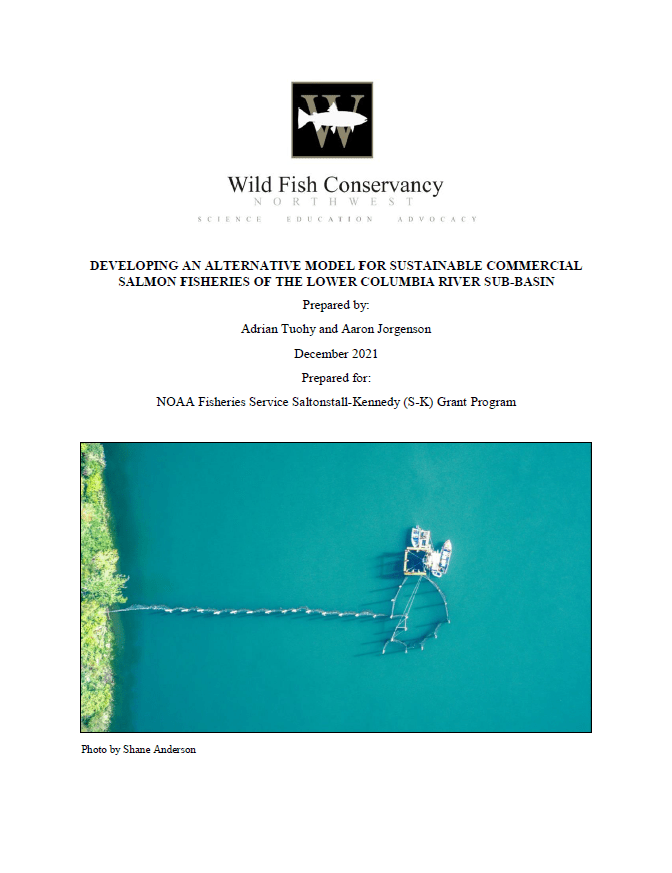
Description |
|---|
A final report to the National Oceanic and Atmospheric Administration (NOAA) Saltonstall-Kennedy (S-K) Grant Program summarizing results of fish trap research and commercial test fishing between 2018-2020 in the Cathlamet Channel, Lower Columbia River, WA. Bycatch impacts to Endangered Species Act (ESA)-listed Pacific salmonids (Oncorhynchus spp.) dramatically constrain commercial fishing opportunities in salmon fisheries of the Columbia River and elsewhere in the U.S. Pacific Northwest. To investigate the viability of an alternative fisheries model to increase sustainable fishing opportunities for underutilized hatchery-origin salmon in the lower Columbia River, a commercial salmon trap (or, ‘pound net’) fishery was implemented on a test-basis between August and November 2018-2020 in the Cathlamet Channel, WA. In contrast with the conventional gill net fishery, the test fishery employed a passive, live-capture fishing gear to minimize bycatch mortality of ESA-listed wild salmonids. Use of the salmon trap enabled selective harvesting of hatchery-origin salmon and successful release of bycatch. Furthermore, value-added practices and direct marketing strategies were employed to develop a reputation of quality and sustainability for trap-caught salmon products in the marketplace for the benefit of future fishery participants. Results from 2018-2020 demonstrated that the trap fishery effectively harvested commercially viable quantities of hatchery-origin Chinook Salmon (O. tshawytscha) and Coho Salmon (O. kisutch) with minimal mortality effect to wild salmonid bycatch. Over the course of 2018-2020 fall season test fisheries, a total of 4,818 hatchery-origin Chinook Salmon and Coho Salmon were selectively harvested, with revenue exceeding estimates of annual costs. A total of 4,357 unmarked (assumed wild-origin) adult salmonids were successfully released between 2018-2020 with zero adult immediate mortalities. Post-release survival of wild Coho Salmon bycatch from modified passive capture and release processes was estimated to be 0.969 (CI (0.961 ≤ 𝑐𝑢𝑚𝑢𝑙𝑎𝑡𝑖𝑣𝑒 ≤ 0.971) = 0.95) over three consecutive years of net pen holding studies. These results, paired with marketing-project findings, suggest that modified salmon traps could prove effective in minimizing wild salmonid bycatch mortality and improving the profitability of regional salmon fisheries. Given the results of fish trap research and test fishing, the Washington Department of Fish and Wildlife (WDFW) is now moving forward with a formal process to legalize fish traps for mark-selective commercial harvest within the lower Columbia River. |
File Attachment |
|---|
Download |